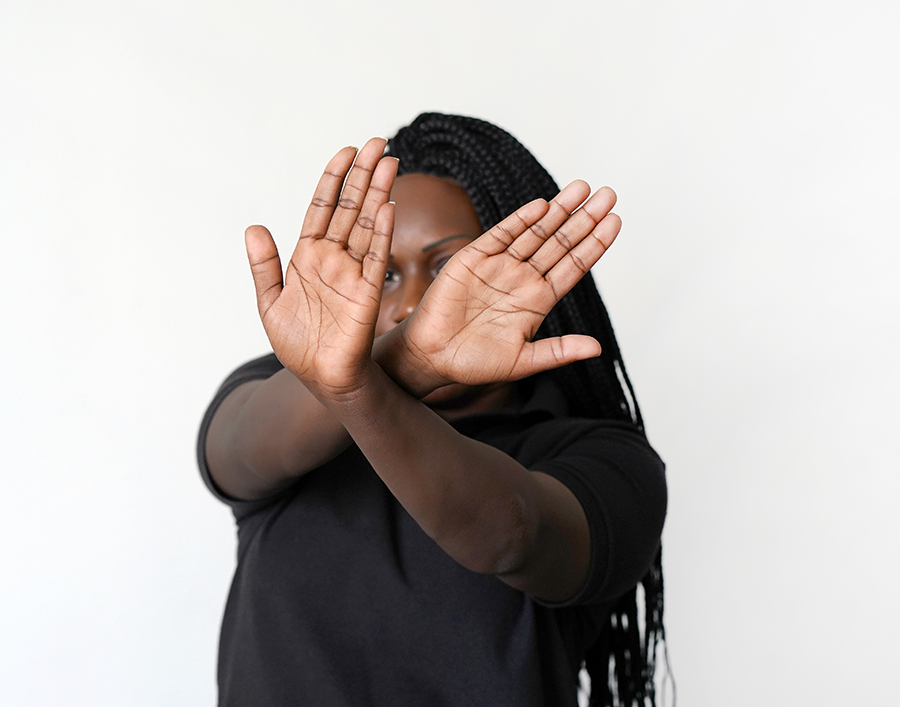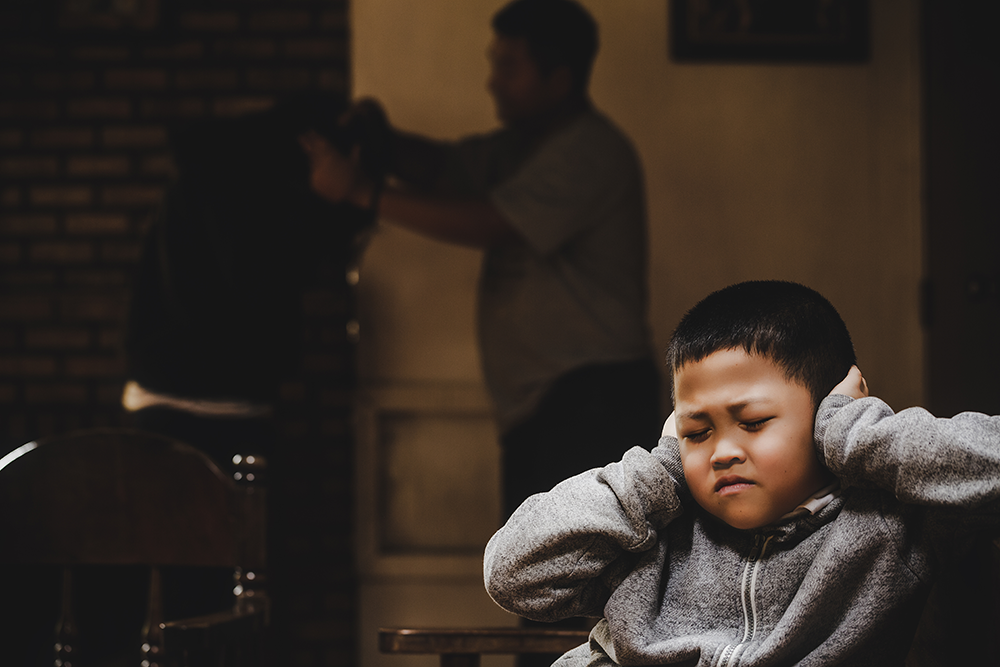
Domestic Violence is a social problem and a public health issue. During the month of October, we shine a light on what it is and what we can do about it. Awareness is a first step towards finding a remedy.
By Beverly Dawn Whatley, M.Ed.
• She broke one of his rules; he broke one of her arms.
• He pretended to be unaffected as she hurled insults about his income and his body. It would have hurt less if she had hurled knives.
• The serenity of a suburban street gets shattered by police, fire, CSI, and the coroner. A barricade situation can mean hours of neighbors on lockdown. This plays out on the nightly news in every metropolitan area. Family secrets — revealed.
• Domestic Violence is defined as a pattern of abusive behavior whereby a family or household member seeks to have power and control over others through intimidation, threats of violence, or physical harm. Also referred to as Intimate Partner Violence there is nothing “intimate” about it. It does not respect zip codes, socio-economic status, age, race, religion, or any other demographic.
What does it look, sound, and feel like? How are we addressing it?
FORMS of Domestic Violence
Domestic Violence can be:
- Physical – punching and hitting, with or without weapons, with intent to harm
- Emotional – tactics and mind games [gaslighting] that promote discomfort, fear, or hurt feelings
- Verbal – language that is violent or demeaning such as insults, or the silent treatment
- Sexual – forcing non-consenting sexual activity
- Financial – taking by force, siphoning accounts, or restricting access to money
- Reproductive Coercion – insistence upon pregnancy or termination; sabotaging birth control
- Digital – online harassment; control of social media accounts and activity; using the victim’s cell phone to monitor whereabouts; hacking “smart house” technology for surveillance or entrance; installation of tracking or recording devices; revenge porn weaponizing sexual photos
THE CYCLE
Imagine a clock. From 12 to 3 things are good, but one knows around 4 life gets ragged. It may start slowly or explode, but by 6 it’s full-blown chaos. Contrition and apology set in around 9. Gifts, tears, promises, with make-up sex if it’s a couple, mark a return to normalcy by 12. However, like the clock…
WHY IS THIS SO UNDERREPORTED? WHY DO VICTIMS STAY?
Domestic Violence is volatile. It can render a victim paralyzed to report or escape. Even officers are extra cautious when answering a domestic call.
Trauma and control distort the thought process. The victim shifts between blame and shame. This is compounded when isolated from family and friends. Now, the image of self-worth is damaged. If the family has expectations like “our marriages work”, leaving is failure. Perhaps more time and patience will improve the situation and change the abuser. Taking the abuse to spare the children can become a mother’s sacrifice. If the abuser is the major or sole income provider, there are no finances to support leaving. The worst might be fear. If I report it but I have nowhere to go, how much worse will it be? If I leave, will it prove fatal? I’m just scared!
CHILDREN AND TEENS
We learn patterns of communication, relationships, behavior, and acceptance from modeled examples. If a girl sees women victimized, trauma becomes normalized. A boy who learns the strength of a male is dominance over a female, is primed to be an abuser.
Long before the frontal lobe of our brain and responsible decision making converge, we long for the experience of dating. There are some misconceptions about love and intimacy that are untested when one is still in the teens. The commentary is similar to that of adults:
- He hits me because he loves me.
- Look what you made me do! (After a physical assault)
- It’s my fault. I never should have… (said or done something)
- You’re lucky to have me. Nobody else would want you.
- Can’t you take a joke? You’re too… [sensitive, hormonal…]
- You know how to push my buttons. Why do you set me off?
- He sometimes loses control. He doesn’t mean it.
THE COST
A 2004 study by the University of California at San Francisco estimated the cost of DV in the U.S. to be upwards of 8.3 billion dollars annually. The same study indicated 4.4. trillion worldwide. These dollars include medical, productivity loss, and criminal justice costs. Imagine the added stressors from the pandemic lockdown between 2020 and 2022. South Carolina reported a cost of 350 million dollars for 2020. Now, figure in another 49 states…
This is a major public health concern and a hit to the nation’s economy.
INTERVENTIONS
Anyone who fears a situation may escalate should have an escape plan. Where can you go where the aggressor won’t find you or endanger another household? What do you need in a “go bag” kept in a car, at work, or at a friend’s home? Where is your cash stash? What resources are in place to help you get re-established?
Most communities have at least one major agency with a website. Many online resources have a “leave site” button that immediately returns the user to a search engine. You may also be advised to clear your browser history after visiting these sites.
That leaves the aggressor to face charges, possible jail time, and little remediation.
Research your county for a Batterers Intervention Program designed to rehabilitate, end the cycle, and instill a sense of accountability in abusers. Prepare to address mental illness, drugs, and alcohol as contributing factors. Consider starting one within an existing social program.
The U.K. has implemented a Domestic Abuse Prevention Program (DAPP) that offers group or one-on-one support for the aggressor. Participants learn the cycle of violence, building empathy, techniques for de-escalation and the effects of domestic violence on children. They also explore their own abusive behavior and what respectful relationships look like. It is not perfect and does not guarantee risk reduction to the victim, but it’s a start.
October is Domestic Violence Awareness Month. It is commemorated by purple, the color of bruises. James Baldwin wrote, “Not everything that is faced can be changed, but nothing can be changed until it is faced.” Let’s work to change the face of relationships to where arms hug, words heal, and tears are an expression of joy. Love shouldn’t hurt.
Resources:
National Domestic Violence Hotline (800) 799-SAFE
TTY (800) 787-3224 (206) 518-9361 video phone for deaf callers
Locally: Search “Domestic Violence Hotlines” for shelters or counseling near you
For a federal perspective
Domestic Violence | OVW | Department of Justice
Example of a city resource guide – Pittsburgh, PA
https://pittsburghpa.gov/police/domestic-violence-resource-guide
First Step provides services for 43 communities – Wayne County, Michigan
For advocates or victims in need of support – Washington D.C.
Domestic Violence Survivor Supports | dhs (dc.gov)
For those seeking advice or shelter – Los Angeles, CA
Domestic Violence (lacounty.gov)
About :
Beverly Dawn Whatley is a writer, actor, educator and activist. Ms. Whatley is an alumna of Eastern Michigan University and Chapman University in Southern California. She has functioned as an ally and advocate around Domestic Violence in two states. Beverly served on the board of the California tri-county Domestic Violence Council [Los Angeles, Kern, Ventura,] and produced a documentary on survivor stories in Michigan. Along with her educational consulting duties and writing interests, she is pursuing more work as a voice-over actor. Ms. Whatley has been published in B.L.A.C., a Detroit area magazine, and is a frequent contributor to Heart and Soul









